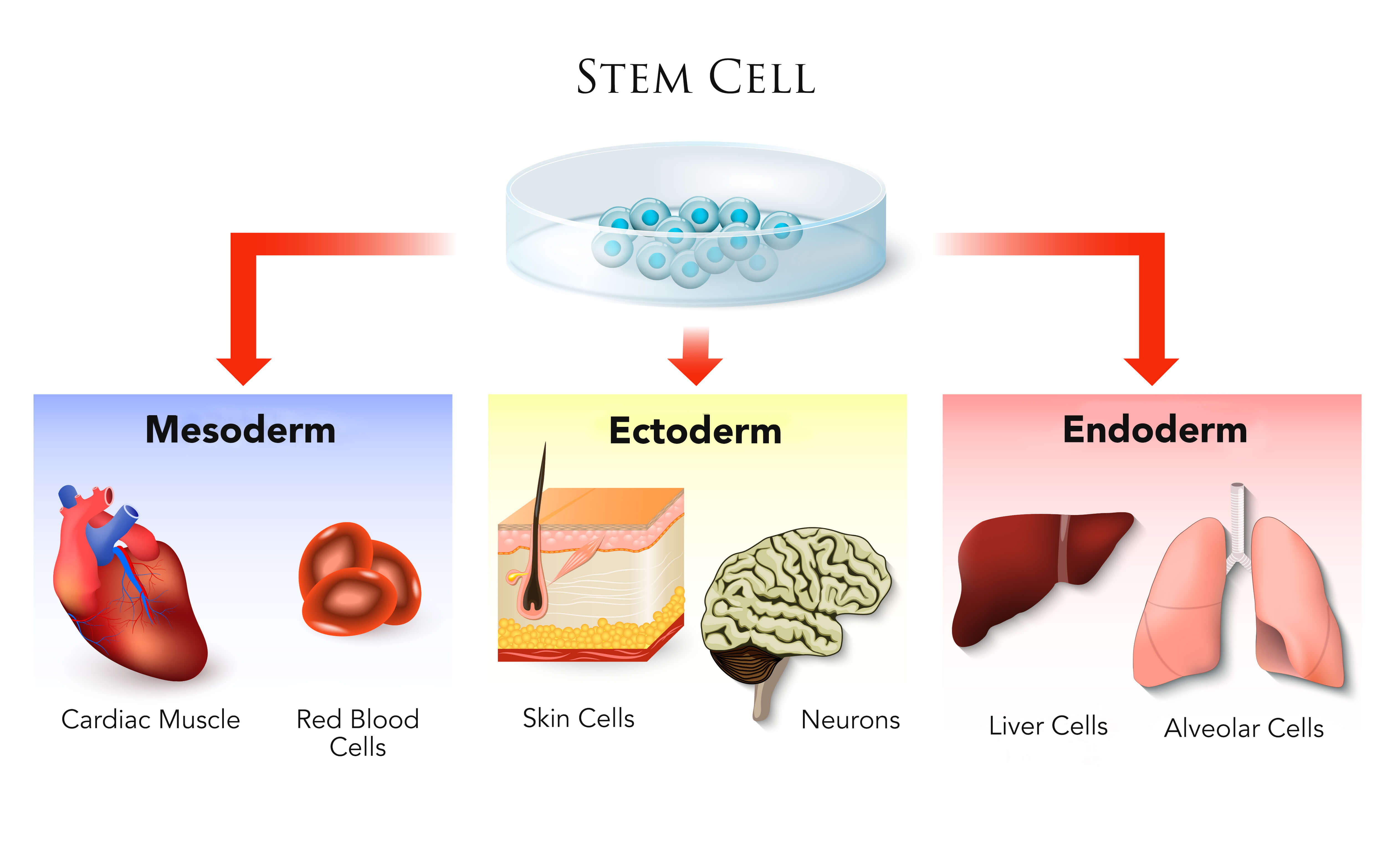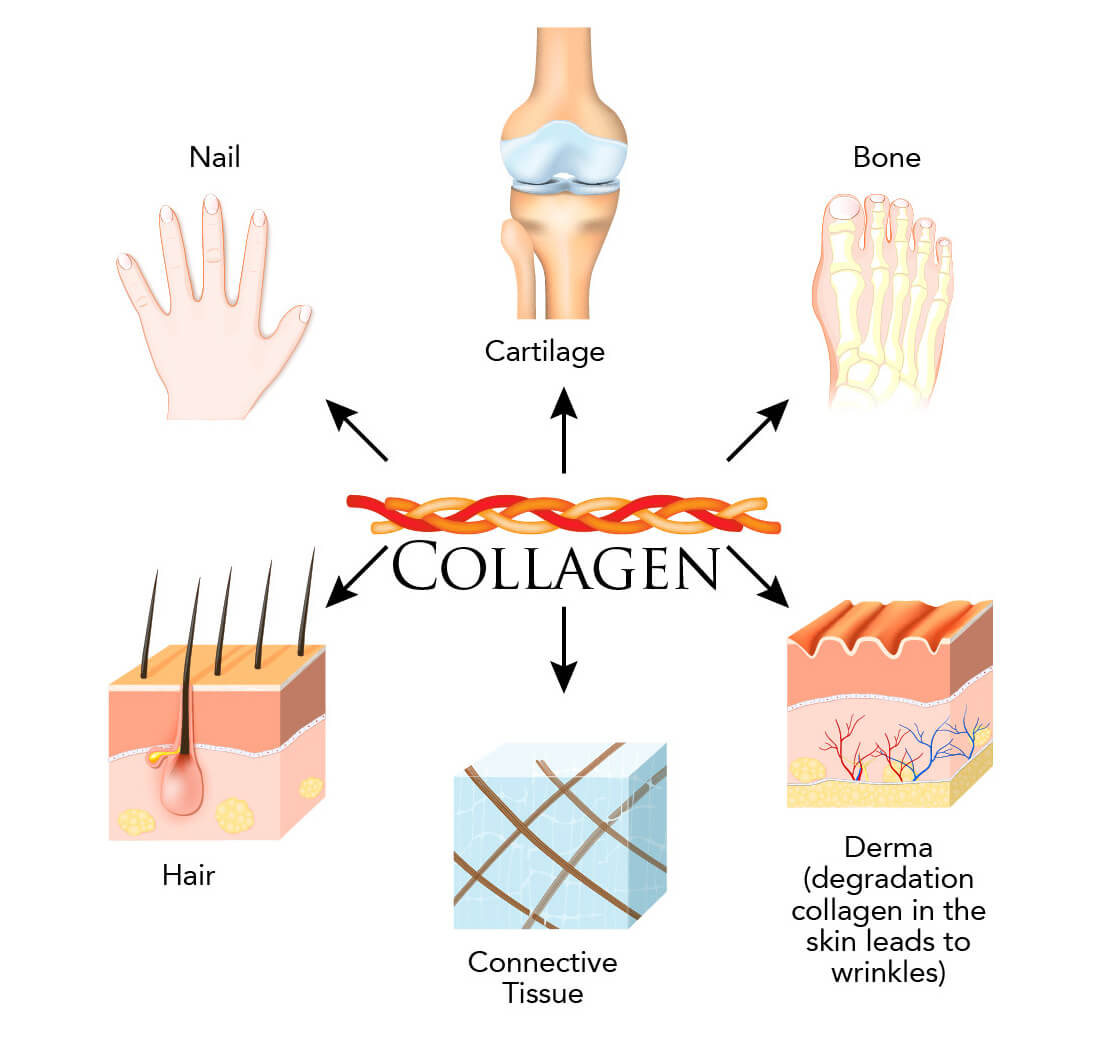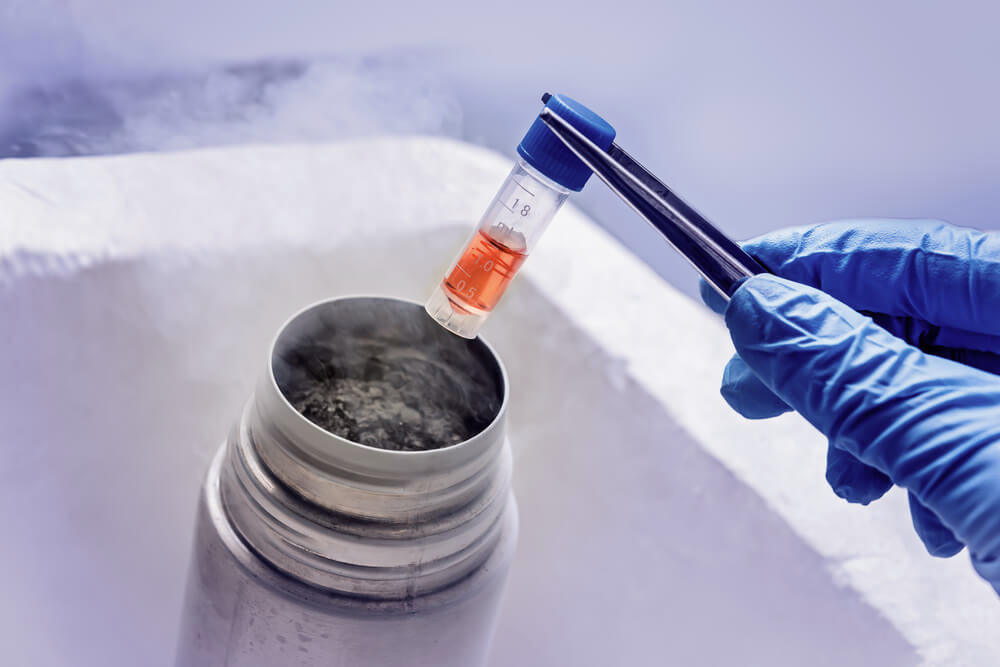The Truth About Stem Cells in Skin Care

Stem cells have been in the headlines for quite a few years now, with stem cell technology taking huge leaps and bounds in the medical industry.
However, stem cells are also now being increasingly utilized in the skin care world too…
Why?
Because these prized ingredients have the potential to truly transform the health and appearance of your skin.
What Are Stem Cells?
In humans, stem cells are cells within the body that have the ability to transform themselves into a variety of other specialized cells.
Stem cells can develop into everything from bone and muscle cells to brain and red blood cells, and will do this as and when the body needs to replace different cells. This is why stem cells have become such a popular medical treatment, because thanks to their regenerative qualities, they can be used for treating a wide variety of different health conditions.

Of course, not all stem cells are the same…
They cannot all become every single cell in the body, and they are usually limited to which cells they can actually transform into. This is referred to as the potency level of a stem cell, meaning that the more potent one is, the more cell types it is able to develop into.
Where do Stem Cells Come From?
The majority of the stem cells used in the medical world are derived from human embryos, after which they are nurtured and grown in a lab until they are ready to be used.
However, it would be pretty much impossible for companies to incorporate this live material into skin care products, which is why an alternative needed to be found.
Instead of using embryonic stem cells, the stem cells used in skin care are derived from plants. Since plants cannot run away when they are under attack, they instead have their own internal mechanisms that help them to survive any damage, and these mechanisms come from their stem cells.
Wondering if any plant can be used for its stem cells?
Technically, yes, although some plants contain stem cells that are far more powerful than others.
Some of the best plant-based stem cell sources include:
- Edelweiss – these tiny flowers have evolved to be able to withstand such harsh temperatures in alpine regions, and their stem cells are packed with potent antioxidants
- Mushrooms – pretty much every cell produced by a fungus has the potential to act as a stem cell
- Apples – have been shown to be especially effective when it comes to fine lines and crow’s feet
- Lilac – these stem cells contain specific properties that decrease the amount of sebum produced by the skin, meaning that they are extremely effective at tackling acne
- Argan – one of the only stem cells out there that are able to protect and revitalize the stem cells that are already in the human body
How Do Stem Cells Help the Skin?
As mentioned above, different plant-derived stem cells have their own unique properties.
While this may be the case, stem cells in general can all help the skin in a number of different ways.
How?
Well, when they are applied to the skin, stem cells split into two. One of the new cells created is similar to the original stem cell, while the other is known as a “daughter” cell. This is the cell that is then able to receive and process signals from other parts of the skin that tell it when new specialized cells are needed.
But what exactly do stem cells do for the skin?
To put it simply, stem cells help to keep the skin looking and feeling young and healthy. The growth factors that they contain help to boost skin cell regeneration, meaning that the skin is constantly being repaired and renewed.
There is also research out there that suggests that stem cells are able to increase the amount of collagen produced by the skin.
What is collagen?
It’s one of the main structural proteins that give your skin its smoothness and firmness. While your skin produces this itself, the rate at which it does so declines with age, resulting in fine lines, wrinkles, sagging skin and more. Since stem cells can potentially increase this rate back up, they are now being seen more and more in anti-aging products.

If you are looking for stem cell products to help with aging skin…
The stem cells will work even better when combined with complementary ingredients.
In terms of anti-aging, this could include the following:
- Peptides – peptides are key when it comes to the creation of protein, and since protein is what makes up the skin’s structure, peptides can really help to keep the skin firm, smooth and tight. There are several different peptides out there, and each one will bring your skin some incredible benefits
- Hyaluronic acid – this is a humectant that is naturally produced within the body, but declines with age. Hyaluronic acid is able to hold up to 1000 times its weight in water, and draws in moisture from the environment. When applied to the skin, it helps to keep the skin hydrated, meaning that it looks and feels soft and supple, with a decrease in fine lines and wrinkles
- Growth factors – these are naturally found in stem cells, but having them included additionally in a product means that you will see an even bigger difference when it comes to skin cell regeneration and rejuvenation
While it isn’t possible for plant stem cells to turn into human stem cells, they are still able to bring about changes in the skin at a cellular level. This means that the changes will be more significant, as well as longer lasting.
Do Stem Cells in Skin Care Actually Work?
Since the concept of using stem cells in skin care is still quite a new one, there are many sceptics. There is not yet enough research to draw a conclusive answer as to whether or not topical stem cells really help the skin.
Nevertheless, the studies that have been carried out so far indicate promising results.
Whether or not these results are due to the stem cell activity itself, or instead to the antioxidants and other active extracts within the stem cells, is yet to be determined.
Choosing Skin Care Products that Contain Stem Cells
Decided that you want to give topical stem cells a try?
There are now so many products out there that make use of this ingredient, so how do you know which one to go for?
Well, the most important thing to look at is the ingredients list.
You need a product that lists stem cells as their main active ingredient, as this means that there are enough stem cell components within the product to actually make a difference to your skin.
Just like with every other skin care ingredient out there, there are many brands that plaster a star ingredient all over their marketing, but only make use of this in miniscule quantities in the actual products.
Many products also list the key substances within stem cells on the ingredients list, rather than the stem cells themselves.
These include:
- Quercetin
- Ellagic acid
- Ferulic acid
These ingredients would have been produced synthetically, but this doesn’t mean that they are not as good as plant stem cells themselves…
They would actually be much more stable, and would also be completely free of any contaminants. They would also be formulated in a way that your skin would be able to quickly and easily absorb, enabling them to have a more significant effect.
Since you want to give the stem cells enough time to properly have an effect on your skin, you would be best off using a serum, cream or mask that contains the ingredient. These products will also be formulated with other antioxidants and skin-boosting nutrients, giving your skin some intense therapy.
When it comes to the price of stem cell skin care products…
Don’t expect to see bargain prices. The technology needed to create these products is quite advanced, and this can often push up the price of the final products.
This is why it is so important to make sure that you are paying for quality by fully scrutinizing the ingredients list.
Stimulating the Stem Cells in Your Skin
While topical stem cells may be great, don’t forget that your skin already has its own supply of stem cells, and these should not be neglected.
Although these can slow down when it comes to their efficiency, there are ways to stimulate them and get them functioning in the same way that they used to.
How?
The most effective way is through exfoliation, preferably chemical exfoliation rather than physical.
What’s the difference?
Physical exfoliation requires the use of an abrasive material, such as a scrub or a sponge, to physically dislodge dead skin cells from the surface of the skin. Chemical exfoliation makes use of specific chemicals to dissolve away the substance that holds dead skin cells to the skin, enabling them to be washed away.
Chemical exfoliation is usually the better option, since physical exfoliation can often tug and scratch at the skin, causing micro-tears. Physical exfoliation can also sometimes result in your scrubbing away your stem cells, preventing them from multiplying and benefiting your skin.
You are probably wondering…
How does exfoliation stimulate my skin’s stem cells?
Because when your skin loses the old, dead skin cells that have settled on its surface, this triggers its keratinocyte stem cells to produce even more stem cells. This then helps to renew and regenerate your skin.
Of course, don’t be tempted to over-exfoliate either, even if you are using a chemical exfoliant rather than a physical one. This will only damage the outer layer of your skin, and will have a negative effect on your skin’s stem cells.
The Future of Stem Cells in Skin Care
So, where does the future lie when it comes to using stem cells in skin care?
Well, while you can expect to see plenty more products coming out that contain plant-derived stem cells, you may also see a few companies going down a different route…
As mentioned earlier, plant stem cells cannot develop into human cells, which limits what they are able to do.
The alternative is using components from human stem cells.

These are obtained from consenting adults, rather than embryos, meaning that there isn’t any controversy surrounding the ingredient.
However, there is a problem…
Actual human stem cells are extremely fragile, meaning that they would be destroyed by the processes required in order to formulate them into a skin care product. They are also quite large in size, meaning that the skin would not be able to properly absorb them.
So, what’s the solution?
Well, companies can use those human stem cells to grow thousands more stem cells, which they can then use to produce the specific “ingredients” needed to boost the skin.
This could potentially really help with the following:
- Production of collagen, which will keep the skin firmer and smoother
- Thickness of the epidermis, which will help to protect the skin from the environment while better retaining moisture
- Deeper wrinkles and lines, which other topical ingredients often cannot help with
Of course, stem cells can also be used as an injection, rather than being formulated into a cream. However, this would mean that the stem cells would need to be derived from the person who is actually receiving the treatment, and this is something that some brands are looking into further.
Since they were originally derived from embryos, stem cells have long since had controversial connotations. However, technology has come a long way since then, and thanks to so many new innovations, the stem cells used in skin care are completely free of this controversy. Not only that, but they are looking to be extremely promising when it comes to treating a wide variety of different skin conditions, making this an ingredient that you should definitely look out for!

